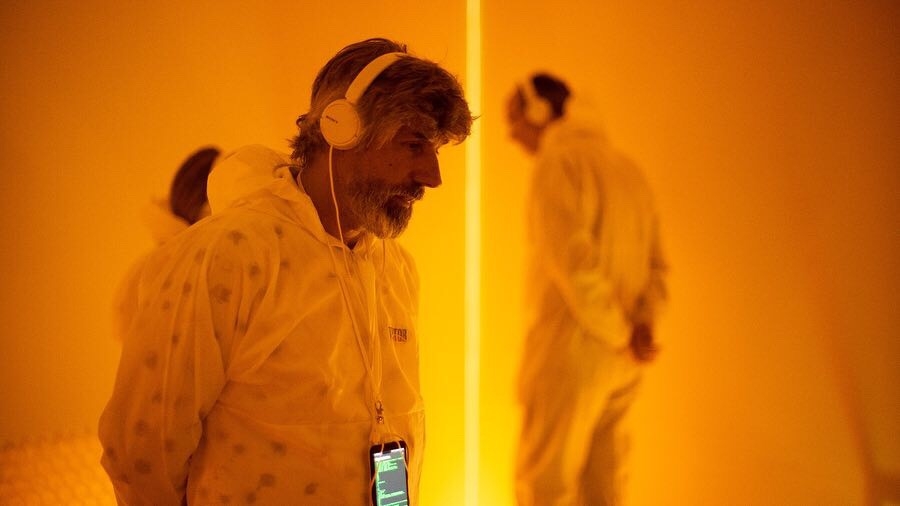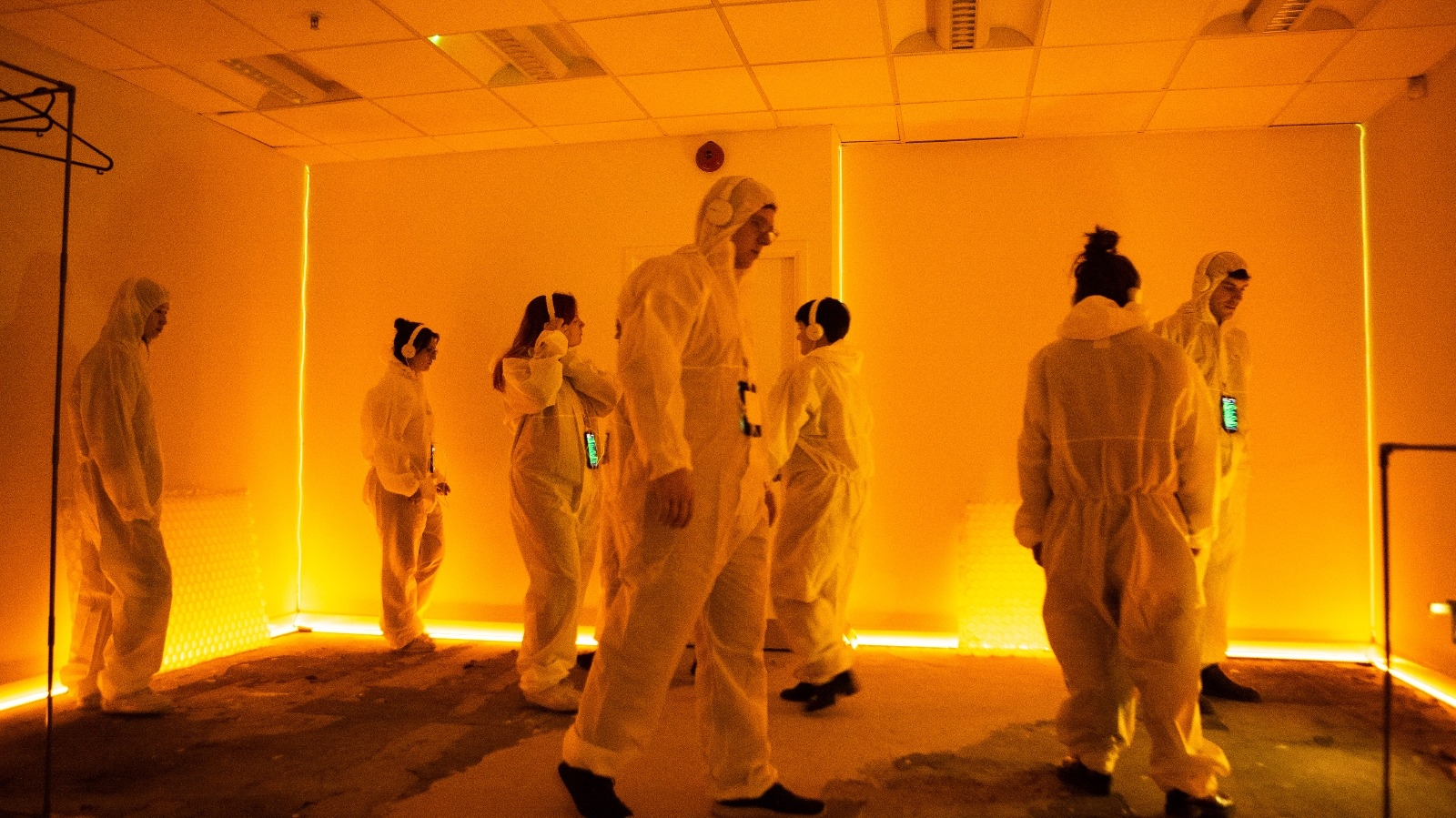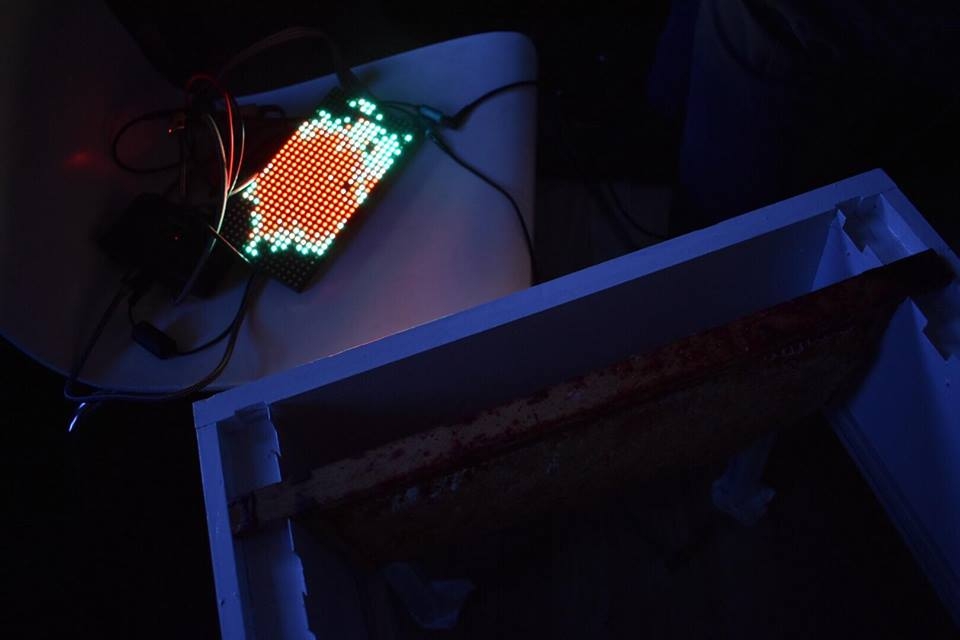Silencing The Virus

A collaboration with Lily Hunter Green.
Silencing the virus is an ongoing collaborative project with an axis of exploring and communicating existential dangers to current bee populations particularly from infectious viruses including the Israeli acute paralysis virus (IAPV).
IAPV is an dicistrovirus found widespread amongst honey bee populations and at all developmental stages of bee life. Though some infections have been observed as asymptomatic, in other cases such bees have shown symptoms of shivering wings, mitochondrial dysfunction, nerve function impairment and paralysis. Transmission of IAPV has been detected through both colony food and the parasitic mite Varroa destructor, and its wider effects have been linked with colony collapse disorder — a sudden decrease in numbers of worker bees without notable signs of disease resulting in colony loss. In 2009, Maori et al found that IAPV could suppressed by RNAi-silencing – by feeding bees with double-stranded RNA thus greatly reducing bee mortality and protecting bees from Colony Collapse Disorder.
Silencing the virus’ has been developed as a sound sculpture with a foci of interpreting IAPV as an algorithmic virus that manifests itself between human nodes. Central to this theme is an algorithm which works by infecting a pieces of music composed by Lily Hunter Green with a virus that chaotically alteres byte sequences within an audio stream in real time. The result is a capricious and ephemeral piece of music within which a virus can grow and abate. This is caused by an unanticipated degradation and decay of the music as it is overcome with infection. Whilst listening to the piece, human nodes can spread the infection through proximity — a feature facilitated by hardware and software sensors on a mobile phone device.
In addition to the musical piece, the depiction of the virus is developed through spatial infection algorithm run on a visually infected honeycomb via a RGB matrix embedded in Langstroth honeycomb frame.





Collaborators
Lily Hunter Green
Eyal Maori
Tom Moore
Film and Images
Zoe Coldham
Thanks to
Arts Council England
Birkbeck, University Of London
University of Cambridge
References
Maori, E., Lavi, S., Mozes-Koch, R., Gantman, Y., Edelbaum, O., Tanne, E. and Sela, I., 2007. Isolation and characterization of IAPV, a dicistrovirus affecting honeybees in Israel: evidence for intra-and inter-species recombination. J. Gen. Virol, 88, pp.3428-3438.
Maori, E., Paldi, N., Shafir, S., Kalev, H., Tsur, E., Glick, E. and Sela, I., 2009. IAPV, a bee‐affecting virus associated with Colony Collapse Disorder can be silenced by dsRNA ingestion. Insect molecular biology, 18(1), pp.55-60.
Chen, Y.P., Pettis, J.S., Corona, M., Chen, W.P., Li, C.J., Spivak, M., Visscher, P.K., DeGrandi-Hoffman, G., Boncristiani, H., Zhao, Y. and Delaplane, K., 2014. Israeli acute paralysis virus: epidemiology, pathogenesis and implications for honey bee health. PLoS pathogens, 10(7), p.e1004261.
